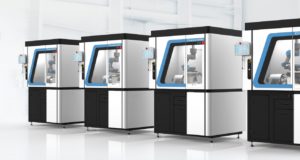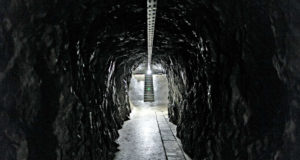Improvisation is the process of devising a solution to a requirement by making-do, despite absence of resources that might be expected to produce a solution. In a technical context, this can mean adapting a device for some use other than that which it was designed for, or building a device from unusual components in an ad-hoc fashion. Improvisation in the context of performing arts is spontaneous performance without specific preparation. The skills of improvisation can apply to many different faculties, across all artistic, scientific, physical, cognitive, academic, and non-academic disciplines.
Big design firms such as IDEO and Smart Design have made millions on their “design thinking” and “human-centered design process.” Which is good for them, but doesn’t necessarily teach you how to crib their mojo for your own endeavors. Peter Robie, an Engineering professor at Dartmouth, has an answer that would make Dunder Mifflin’s Michael Scott: Copy improv comedy classes.
Apparently, in his Design Thinking course, Robie has students act out how people use the objects around them. It’s a technique learned from experience. According to The Dartmouth Engineer:
“This class on improv is a tool for brainstorming,” he explains. “I’ve always thought that the quickest and smartest folks at the brainstorming phase of design have been those who do standup and improv. They never say no. They never miss a beat. Improv requires players to accept what they are given, build on the ideas of others, and encourage wild ideas…”
…”Everyone thinks that they know how to brainstorm, but in fact, brainstorming is usually plagued by problems like self-censoring, competitiveness, and ridicule,” says Robbie. “Improv is a great way for students to learn to defer judgment.”
Why Design Matters
According to Robbie, design is crucial for engineers. “Design begins with the recognition of need and follows an intentional process by which you apply knowledge and actually make products to effect change,” he says. “It is central to innovation. It essentially is the process of innovation.” Not all design is created equal, however. In addition to the aesthetic side of design, Robbie distinguishes between technology-driven design and human-centered design. “Technology-driven design often results in products looking for a need. Human-centered design always keeps the needs of end users in mind,” he says. “Design for humans needs to begin with developing understanding and empathy for human experience. It applies science and technology but also includes insights from the humanities and the social sciences. Engineers often love to jump right into making things, but early in the design process it’s often preferable to focus on deeply understanding the needs of end users.”
Design is a Process
“The most surprising thing to me about design is the fact that you can learn it,” says engineering major Francis Fortin-Houle ’10. “When I first came to Dartmouth, I thought it was a skill that you either have or that you don’t have. Little did I know how wrong I was.”
Robbie demystifies design by breaking it into systematic steps. “I believe it’s important to create classroom experiences that will increase students’ confidence in their own creative design abilities,” he says.
Using improv to get students comfortable with brainstorming is a case in point. “Everyone thinks that they know how to brainstorm, but in fact, brainstorming is usually plagued by problems like self-censoring, competitiveness, and ridicule,” says Robbie. “Improv is a great way for students to learn to defer judgment.”
The process of design thinking is increasingly critical for meeting the ultimate need of humanity: finding ways to live sustainably. “Everything that’s man-made has to go through some design process,” says Robbie. “The world is at the point where we can’t just keep doing things the same way. There’s going to have to be more emphasis on rethinking the design of everything with a focus on life-cycle analysis and searching for radical new solutions.” Engineering students equipped with both comprehensive technical knowledge and creative design abilities will be in great demand — and will have wide-open opportunities in the next wave of technology innovation. “Going forward, these students know that they’ll be required to rethink assumptions about how we make everything in the built environment,” says Robbie. “It’s going to require an enormous creative effort.”







